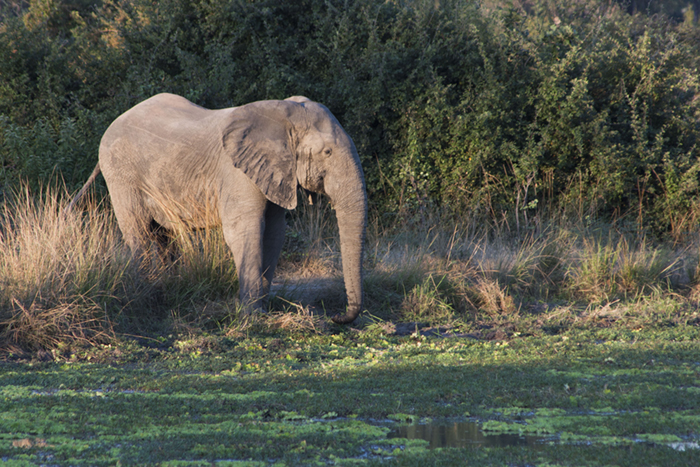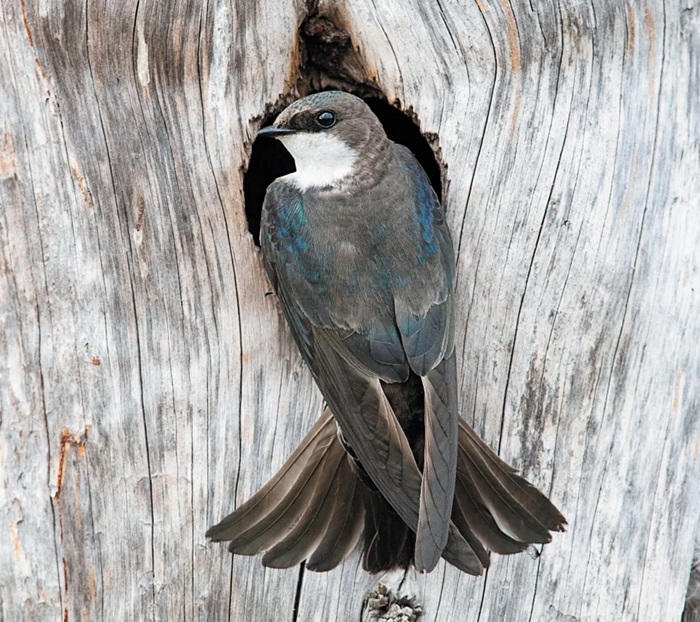Human Footprint Nudges Other Species’ Evolution
Shashwat Mishra January 23, 2025

Humans’ increasingly large footprint across the planet is affecting some wild plant and animal species’ evolutionary paths, a la the “tuskless” wild African elephant seen here. Credit: Robin Cafolla, FlickrCC.
Dear EarthTalk: How has the huge footprint of humanity forced other animal and plant species to evolve differently than they might otherwise have without people around? – Lois V., New York, NY
Humans have profoundly altered the planet, driving plants and animals to adapt in ways they never would have without our impact. Through activities like habitat destruction, pollution, climate change, hunting and introducing invasive species, humans have significantly accelerated evolutionary changes, transforming ecosystems in dramatic and often unpredictable ways.
One example is the rise of tuskless elephants. Decades of ivory poaching have created intense pressure on African elephants. In regions of heavy poaching, up to half of female elephants are now tuskless, an adaptation showing how humans can profoundly alter the genetic makeup of another animal population.
Urban environments have also become hotspots for what some researchers consider accelerated evolution. During the Industrial Revolution, peppered moths in England evolved darker colors to blend into soot-covered trees. Today, insects and city-dwelling birds are similarly adapting to human-made conditions.
Pigeons have modified their eating habits to thrive on discarded food, and some mosquito species have adapted to reproduce in tiny water collections present in city environments. These alterations illustrate the adaptability of species adjusting to environments changed by humans.
Chemical resistance is another area where human influence is clear.
The widespread use of pesticides and antibiotics has driven the evolution of resistant pests and bacteria. Farmers battle “superweeds” that can survive herbicides, and healthcare providers face rising concerns over antibiotic-resistant bacteria.
Climate change has further expedited evolutionary shifts. Animals are altering their migration patterns and breeding seasons to adapt to warmer temperatures. Birds like the great tit in Europe are laying eggs earlier in the spring to align with the availability of insects. Similarly, marine species are moving to cooler waters. This disrupts ecosystems and fisheries.
These adaptations showcase the nature’s incredible resilience, despite some notable drawbacks. Rapid evolution can lead to reduced biodiversity, as species unable to adapt face extinction.
Ecosystem imbalances arise as invasive species prevail, pushing out native organisms. According to the National Wildlife Federation, human activities are driving an unprecedented rate of evolutionary change.

To help, choose sustainably sourced products, reduce waste, and support conservation efforts to protect habitats and species. Advocacy for policies that address climate change and pollution is also key.
CONTACT
Humans Are Driving a New Kind of Evolution in Animals
EarthTalk® is produced by Roddy Scheer & Doug Moss for the 501(c)3 nonprofit EarthTalk. See more at https://emagazine.com. To donate, visit https://earthtalk.org. Send questions to: question@earthtalk.org.
